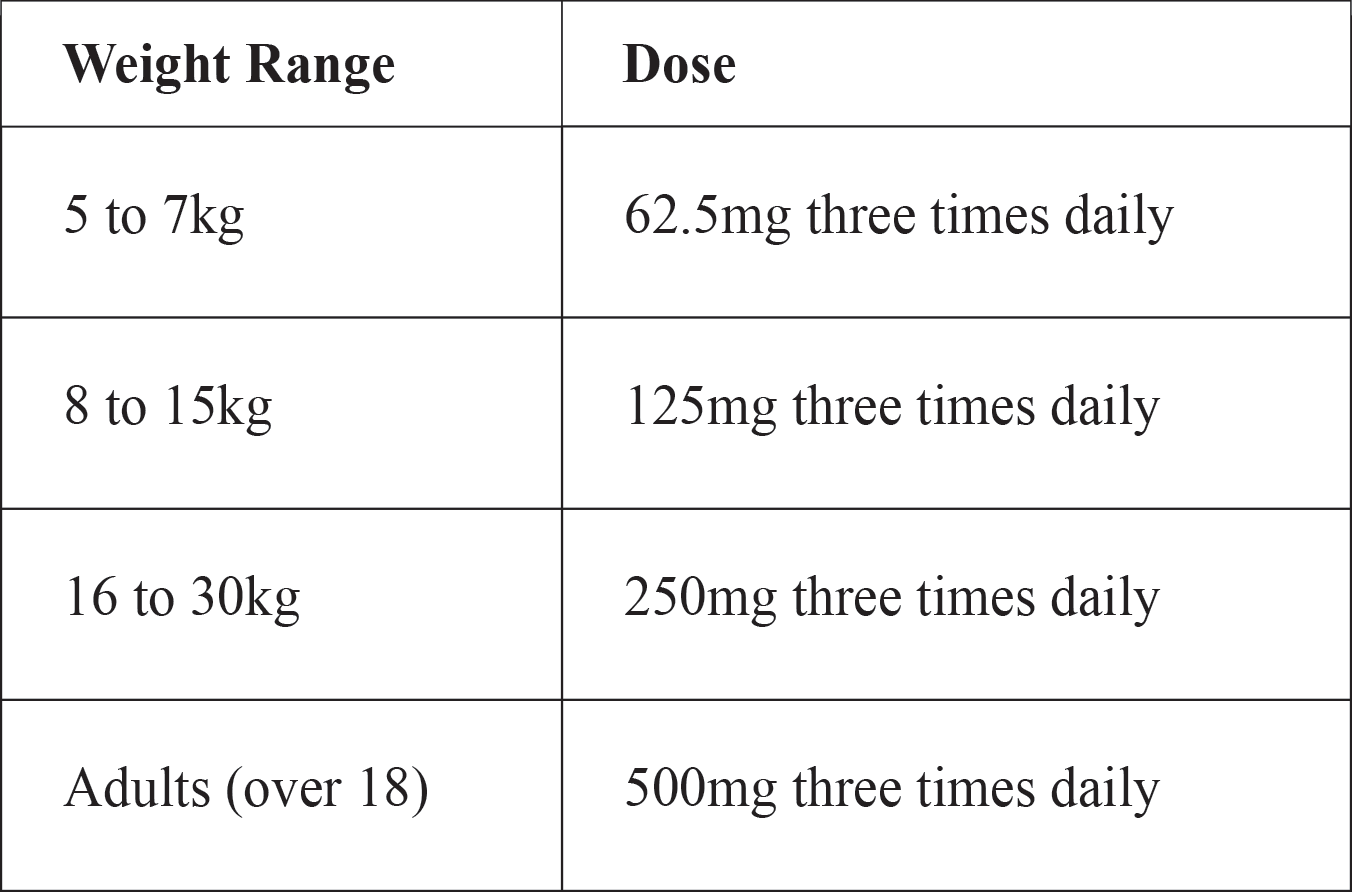1. Name of the location of 90% of epistaxis
2. A genetic disorder that forms AV malformations in the skin, lungs, brain etc
3. Name of posterior vascular plexus in the nasal cavity causing posterior epistaxis
4. 1st line treatment for all epistaxis
5. The common brand name for anterior nasal packing
6. Chemical used in cautery sticks
7. Physically scaring complication of posterior nasal packing with foleys catheter
Coming soon..
Clinical Guide - Antibiotics
This page provides guidance on the use of antibiotics that you will commonly use when managing infections of the ear. More detailed information is available in the Formulary (BNF). The most commonly prescribed drugs to date are Amoxycillin and Erythromycin. Other drug advice will appear at the request of the AEC team. The information applies only to All Ears Cambodia clinicians.
Amoxycillin
Amoxicillin is an aminopenicillin and its structure is based around the beta-lactam ring. It acts to prevent the bacterium from synthesizing a cell wall. It is a broad spectrum antibiotic. This means that it will act against a wide range of bacteria. In particular it will work against the bacteria that commonly cause acute otitis media and infective rhinosinusitis. It is less helpful against infections in skin.
Antibiotics are usually prescribed according to the age of the child. However, Cambodian children are generally much lighter than their Caucasian counterparts so I have chosen to create a table based upon weight rather than age. The information is based upon calculations made using data in the British National Formulary for Children 2010. Between the age of 1 month and 18 years this publication recommends 40mg/kg/day divided into three equal doses.
I have started the prescriptions at 5kg as it is very unlikely that you should need to prescribe at a lower weight. For simplicity I have grouped weight ranges that can use the same dosage.
Do not prescribe it to babies less than one month of age. Refer to the hospital if you are worried. It is safe to use during pregnancy and breast feeding.
Dosage
Contraindications to Amoxycillin use
Do not prescribe Amoxycillin if the patient has a history of allergy to Penicillin.
Side effects of Amoxycillin
Side effects include: rash (stop medication if rash appears), nausea, vomiting, diarrhoea.
Erythromycin
Erythromycin is a macrolide antibiotic like azithromycin and clarithromycin. In your clinical practice in Cambodia you will usually be prescribing it if the patient is allergic to penicillin.
There are some diseases where Erythromycin is the antibiotic of first choice but in your practice, you will only be using it for otitis media and tonsillitis when penicillin cannot be used. Erythromycin is used in the management of chronic rhinosinusitis in adults.
You should not prescribe Erythromycin to children under 6 months of age. If you think that they need the antibiotic refer them to your local hospital.
Erythromycin is given on an empty stomach.
It is safe to use during pregnancy and breast feeding.
Side effects of Erythromycin
Common side effects include: stomach cramps, diarrhoea, nausea, and vomiting.
Uncommon side effects include: jaundice, rash, colitis, heart rate disturbance.
If you think that the patient has a side effect, stop the drug immediately and refer them to the local hospital.
Dosage
Here is the age range and dosage regime.
Cephalexin
Cephalexin is a cephalosporin. This family of antibiotics also includes drugs like cefaclor, cefuroxime and cephradine. It is active against Strep pneumonia, Haemophylus influenza, and Moraxella catarrhalis and this means that it is a useful drug for conditions like acute otitis media and other upper respiratory infections.
Cephalexin is not though to be harmful to unborn babies so it is a safe choice in pregnant women. However, as a general rule, you should avoid using medicine in pregnant women and refer them to the local hospital if you can.
Cephalexin does pass into breast milk and can harm the baby of breast-feeding mothers.
Side effects of Cephalexin
Diarrhoea is the commonest side effect but it can cause a wide range of other side effects such as itching and rash, abdominal pain, nausea and vomiting, and fatigue. Consult your Formulary for a longer list of side-effects and discontinue the drug is any side effect is noted. Refer to the local hospital if you can't treat the infection.
Dosage
For otitis media in children: 12.5 to 25mg/kg by mouth every 6 hours (four times daily) for 7 days.
For otitis media in adults: 500mg twice daily for 7 days. You can also use 250mg four times daily if you wish.








